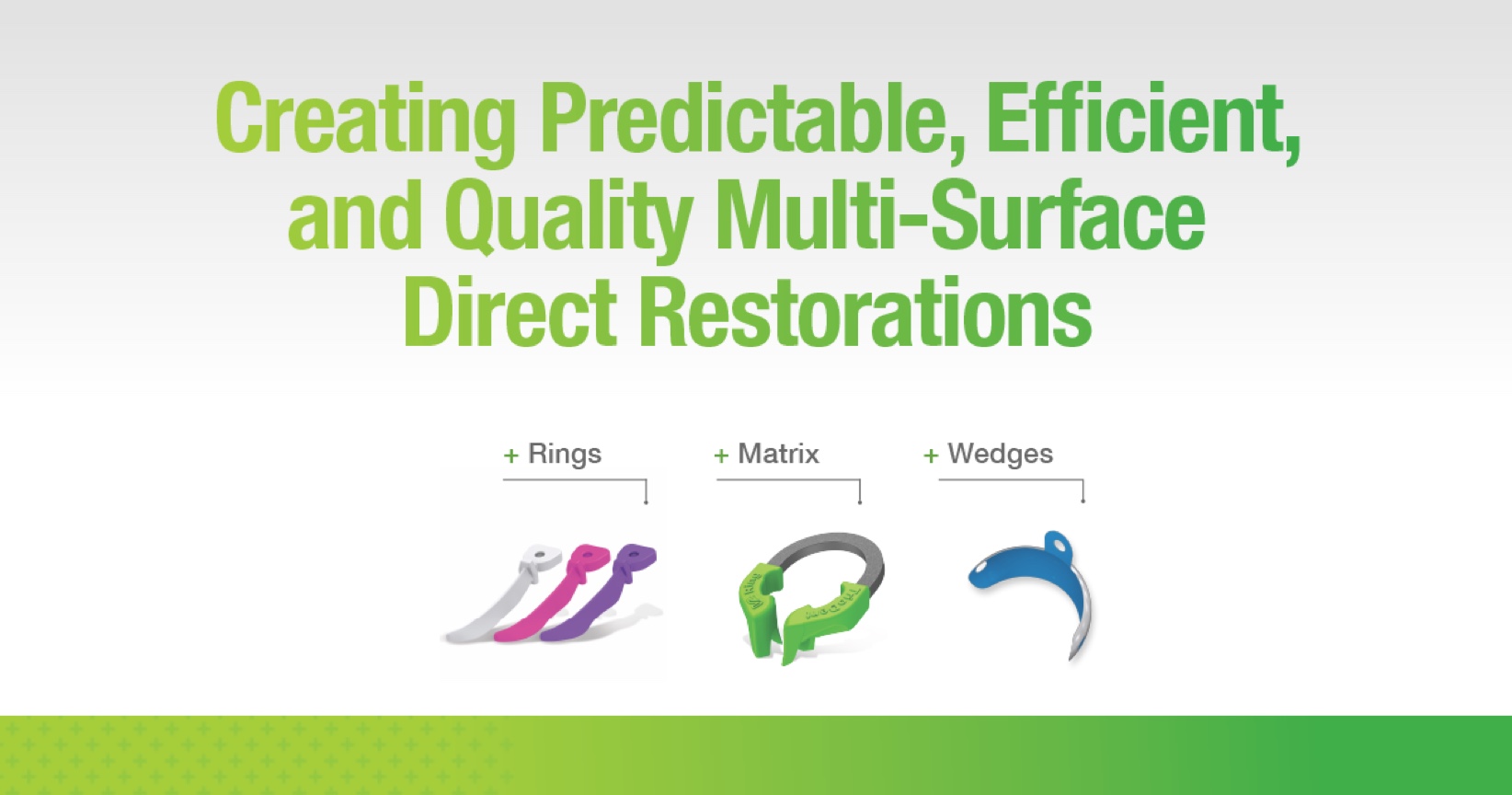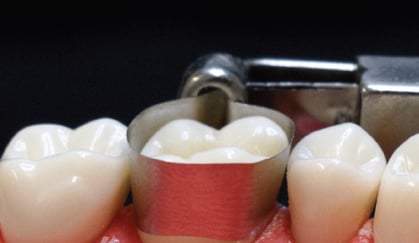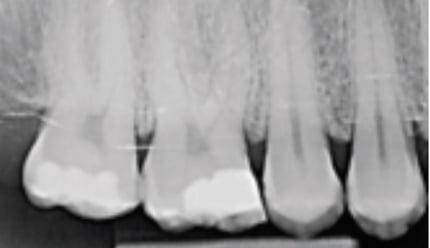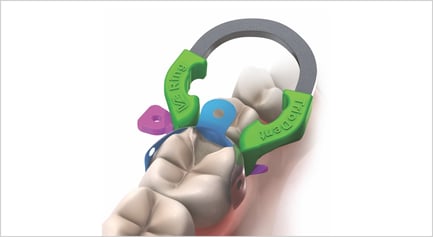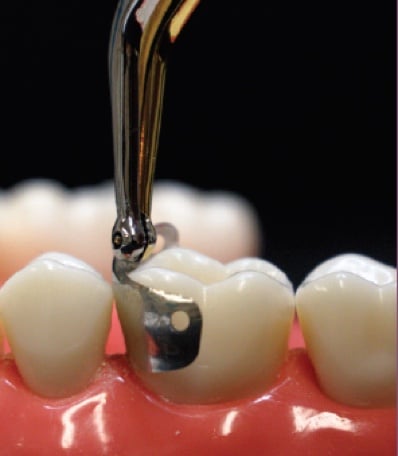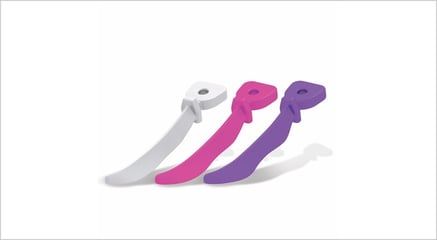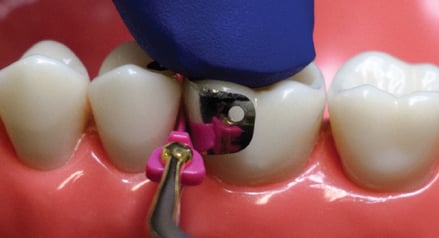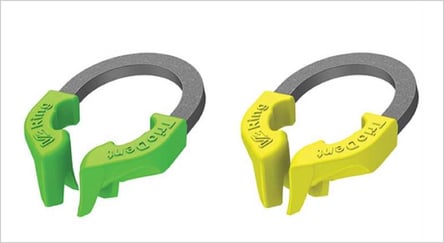The materials used in dentistry have changed drastically over time, but some dentists never move beyond the techniques and materials they mastered in dental school, leaving them outdated and deprived of the latest in dental technology and techniques that could save them time and money, and help them create higher quality work.
An example of this all-too-common mistake is how dentists create multi-surface direct restorations. Too many clinicians still rely on the tofflemire-type and wood wedge technique they learned years, even decades ago. For amalgam restorations, the tofflemire-type matrix and wood wedge gets the job done, but the advent of advanced composite materials presents challenges to dentists who have yet to embrace new and improved matrix technology. Dr. Mike Miyasaki, a well-known dentist says,
One example of the challenge that using a tofflemire-type matrix presents, is that when doing a composite restoration with a tofflemire-type band, the band often lacks the proper interproximal anatomic contour, and has a great chance of an open interproximal contact. Even if acceptable interproximal contact is achieved, the shape of the straight band positions the contact more occlusal than the location of the original anatomic contact. This means that even if there was a tight contact initially, the occlusally positioned interproximal contact may be eliminated after adjusting the occlusion, leaving an open contact once again.
Sectional matrix systems—such as the Triodent® V3 sectional matrix system™—which utilize metal matrix bands that create tight, anatomically contoured interproximal contacts and beautiful marginal ridges are the answer to these other challenges. These systems also utilize wedges that seal the gingival floor under the contact point, and incorporate rings that harness tension to hold the metal matrix in place while slightly opening the contact. The development of sectional matrix systems has greatly increased the ability for clinicians to produce high-quality restorations, no matter how complex they may be.
Here are a few tips for creating predictable, efficient, and quality multi-surface direct restorations using a sectional matrix system:
Utilize the Various Elements of the Sectional Matrix System to Achieve Natural Contours and Tight Contacts:
Even for special circumstances beyond the typical Class II restoration, sectional matrix systems provide practical and efficient ways to successfully complete:
To learn more about using a sectional matrix system, such as the Triodent V3 sectional matrix system in the unique cases presented above, or for additional information about how best to utilize a sectional matrix system in your practice, click here.
An example of this all-too-common mistake is how dentists create multi-surface direct restorations. Too many clinicians still rely on the tofflemire-type and wood wedge technique they learned years, even decades ago. For amalgam restorations, the tofflemire-type matrix and wood wedge gets the job done, but the advent of advanced composite materials presents challenges to dentists who have yet to embrace new and improved matrix technology. Dr. Mike Miyasaki, a well-known dentist says,
“I am in the middle of three generations of dentists who were taught how to place an amalgam restoration using a tofflemire-type matrix band and a wood wedge. For amalgam restorations, this system worked great…but dentistry evolved. When we moved from creating amalgam restorations to placing more esthetic bonded composite restorations, the tofflemire-type system began to present some challenges. Although it’s what I was taught in dental school, I have rarely used a tofflemire-type matrix band in the past 20 years.”
A tofflemire-type matrix band moves the
contact of the composite
restoration occlusally
contact of the composite
restoration occlusally
One example of the challenge that using a tofflemire-type matrix presents, is that when doing a composite restoration with a tofflemire-type band, the band often lacks the proper interproximal anatomic contour, and has a great chance of an open interproximal contact. Even if acceptable interproximal contact is achieved, the shape of the straight band positions the contact more occlusal than the location of the original anatomic contact. This means that even if there was a tight contact initially, the occlusally positioned interproximal contact may be eliminated after adjusting the occlusion, leaving an open contact once again.
Composite restoration placed
with a metal matrix band
with a metal matrix band
Sectional matrix systems—such as the Triodent® V3 sectional matrix system™—which utilize metal matrix bands that create tight, anatomically contoured interproximal contacts and beautiful marginal ridges are the answer to these other challenges. These systems also utilize wedges that seal the gingival floor under the contact point, and incorporate rings that harness tension to hold the metal matrix in place while slightly opening the contact. The development of sectional matrix systems has greatly increased the ability for clinicians to produce high-quality restorations, no matter how complex they may be.
Sectional Matrix Systems like the
Triodent® V3™ Sectional Matrix System
allow dentists to create predictable,
efficient, high quality multi-surface
direct restorations
Triodent® V3™ Sectional Matrix System
allow dentists to create predictable,
efficient, high quality multi-surface
direct restorations
Here are a few tips for creating predictable, efficient, and quality multi-surface direct restorations using a sectional matrix system:
Utilize the Various Elements of the Sectional Matrix System to Achieve Natural Contours and Tight Contacts:
- Select and place the sectional matrix band
The first key in achieving natural contours and tight contacts when using a sectional matrix system is to select the proper size matrix band. In the Triodent V3 system matrix bands come in five sizes. Once the proper sized band has been selected, use the Triodent® Pin-Tweezers to place, remove, and adjust the bands onto the preparation. Fold back the tabs on the band for improved access and visualization of the prep.
Choosing the right matrix band is key in
achieving nice contours and
ensuring the correct placement
of interproximal contact
achieving nice contours and
ensuring the correct placement
of interproximal contact
- Utilize wedges for ideal contours
The sectional matrix wedges are, like the bands, designed to be gripped and placed using the Pin-Tweezers. The wedge plays a crucial role in sealing the matrix at the gingival floor margin and in displacing the gingiva. To place the wedge effectively, place a finder on the matrix band, so as not to displace it, and select the largest wedge that will fit interproximally. This ensures a quality contour between the matrix and the adjacent tooth on the buccal, lingual, and gingival margins. The wedge should fit below the contact point.
The wedge, like the Triodent Wave-Wedge,
seals the matrix at the gingival floor
margin and displaces the gingiva
seals the matrix at the gingival floor
margin and displaces the gingiva
- Secure all parts in place with the V3 ring
After placing the matrix band and wedge, place the V3 ring to secure all parts into place. The ring also plays an additional role in slightly displacing the teeth to temporarily open the contact in order to compensate for the thickness of the matrix. The inverted V-shaped tines of the ring allow it to fit nicely over the wedge. The subtle angulation of the rings also allows them to be stacked (placed one over the other) for multiple restorations.
The ring, like the V3 Ring shown
above, secures all parts into place
above, secures all parts into place
Even for special circumstances beyond the typical Class II restoration, sectional matrix systems provide practical and efficient ways to successfully complete:
- MOD restorations
- Cases where two interproximal surfaces between teeth need a restoration
- Cases where there are multiple teeth in the same quadrant that require restoration
- Cases involving a wide interproximal box
- Cases involving a large interproximal gingival embrasure
- Cases where there is a need to fit the V3 ring around the rubber dam clamp
- Cases where there are heightened concerns about open contacts
To learn more about using a sectional matrix system, such as the Triodent V3 sectional matrix system in the unique cases presented above, or for additional information about how best to utilize a sectional matrix system in your practice, click here.


